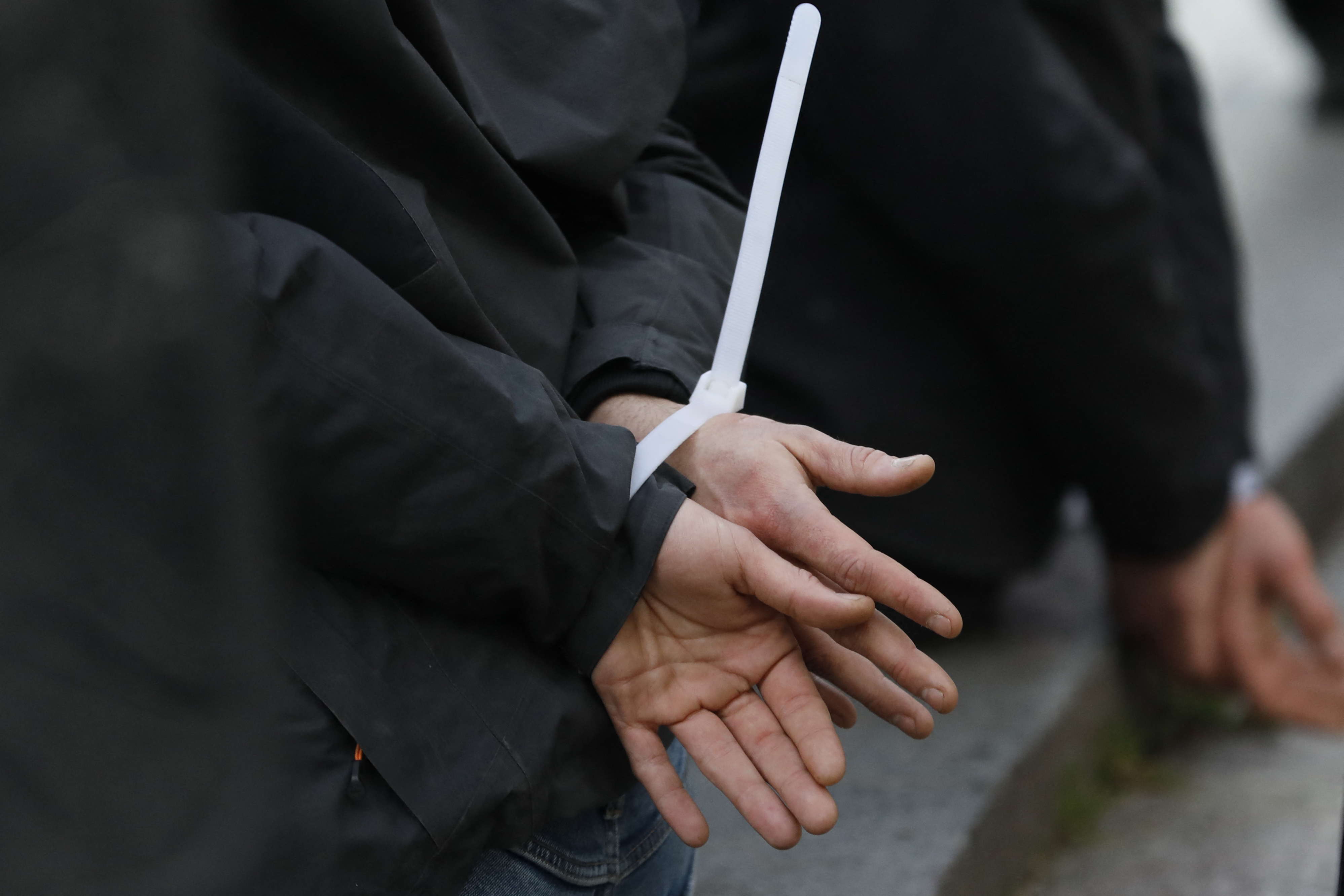End to zip-tie handcuffs: Belgian police revise practices after complaints

Following a string of complaints about the handling of the 2019 Extinction Rebellion protests and the 2020 Black Lives Matter protests, the committee that oversees Belgium’s police has called for practices to be revised, De Standaard reported on Monday.
The committee has most notably called for an end to the use of zip-tie handcuffs, frequently used by Belgian riot police to detain protesters. The plastic ties are tightened around the wrists of suspects and must be physically cut off to be removed.
Numerous complaints have been lodged regarding these restraints leading Committee president Kathleen Stinckens to urge police to “find an alternative.” These handcuffs are used during mass arrests, where the police cannot feasibly carry several sets of handcuffs.
But for all their practical advantages, the handcuffs can be overtightened, leading to injury. In 2020, during a protest in New York, a detainee suffered suspected nerve damage from plastic cuffs. Police officers did not have the tools to remove the overtightened handcuffs, and the suspect was forced to “wait it out” until they reached the police station.
The committee’s findings also revealed that police were resorting to using tear gas and irritating sprays more frequently. During protests in January over Belgium’s anti-covid measures, police forced back protestors with water cannon and tear gas.
Tear gas is banned in warfare and is known to cause major health risks among those who are exposed. Nevertheless, it remains one of the most used crowd-control agents by police forces around the world.
Most countries around the world permit the use of tear gas, but according to the Council on Foreign Relations, there is no legal obligation to record deaths or injuries associated with its use.
The intended purpose of tear gas is to prevent protests from escalating. But in fact the chemical agent can often intensify conflict.
According to Stinckens, there is a need for “clear guidelines for the use of tear gas,” as well as giving individuals exposed to the chemical agent the opportunity to be “decontaminated.”